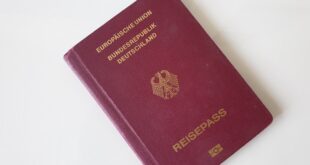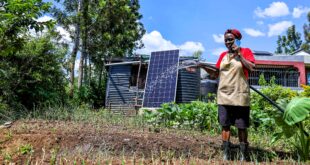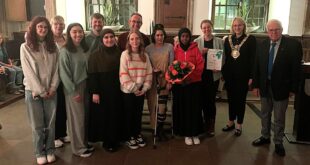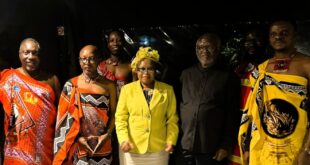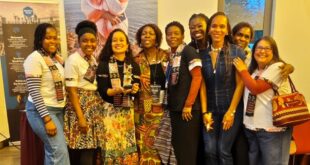In her earlier article, “Germany: When a Black Child’s Needs and Identity Are Ignored,” Amal Abbass* exposed how racism and institutional neglect within Germany’s family law system fracture Black families and undermine children’s cultural identities. In this follow-up piece, she offers a critical analysis of how race, ableism, and systemic bias intersect to deny children their rights — revealing how these forces combine to criminalise pain, discredit Black parenthood, and silence a child’s simple yet powerful plea for love and belonging
[Trigger warning: This article discusses racism, ableism and institutional neglect in the context of family law and child custody.]![]()
I. Introduction: “I Want Papa” — A Legal Plea Ignored
“I want Papa.” A young Black child in Germany has repeated these words for more than six months. Yet despite a court order granting supervised contact with his father, the visits have not taken place. The Jugendamt refers back to the court, and the court refers back to the Jugendamt, leaving the child trapped in a bureaucratic loop that violates his most basic rights.
This is not an isolated case. It reflects a structural problem in German family law: the pathologisation of Blackness and disability. When a Black father lives with chronic pain, depends on medical treatment, and expresses vulnerability, the system does not see resilience or love. It sees risk, incapacity, and threat. The result is a discriminatory logic that punishes Black disabled parents, discredits their testimony, and fractures children’s lives.
⸻
II. The Case: When Pain Becomes a Pretext
The father at the centre of this case is an African American man living in Germany with severe, documented physical disabilities. Years of trauma, surgeries, and degenerative spinal disease shape his daily reality:
• Medical history: One wrist surgically reconstructed with titanium plates, the other healed naturally after fracture; both ankles fractured and healed; six spinal discs damaged, one already replaced; both knees awaiting future replacement.
• Pain management: A treatment plan including Naproxen (anti-inflammatory), Novalgin/Metamizol (severe pain), muscle relaxers, carefully supervised opioid medication, spinal injections, and medical cannabis to reduce long-term opioid dependence.
This is not misuse but medically indicated care. It is what allows him to walk, sleep, and parent.
Yet in August 2025, a forensic toxicology test ordered by the court reported the following:
• THC consistent with prescription use
• Trace cocaine metabolites consistent with passive exposure or rare contact
• Low ketamine levels, a drug commonly used in anaesthesia and chronic pain care
• All other substances negative, including opioids and amphetamines
Although the report stressed clinical context, the court invoked it as “drug abuse.” Meanwhile, the white co-parent — who openly admitted social contact with drug-using circles — was never subjected to equivalent testing. The asymmetry is revealing: the Black body is scrutinised, pathologised, and discredited, while the white body is presumed safe and stable.
⸻
III. Ableism and Racism: A Double Bind
As Nirmala Erevelles argues, people at the intersections of marginalisation face a “stacking of vulnerabilities” (2011).
• Ableism: Disability is conflated with incapacity. Disabled parents are disproportionately likely to lose custody despite no evidence of neglect (Lightfoot & LaLiberte, 2011).
• Racism: Black men are routinely stereotyped as dangerous, irresponsible, or deceitful (Alexander, 2010; Bridges, 2011).
Together, these biases create a double bind. A tall Black man in pain is not read as resilient but as threatening. Prescribed cannabis use is misinterpreted as irresponsibility. His grief — “Sometimes I miss him so much it’s hard to breathe” — is dismissed as manipulation. Even his intellect is doubted: “You cannot be that tall and also intelligent.”
This reflects what Miranda Fricker (2007) terms testimonial injustice: the discrediting of knowledge because of prejudice. His testimony is discounted, while stereotypes are treated as fact.
⸻
IV. Legal Framework: Doctrine vs. Discrimination
German constitutional law should prevent such outcomes:
• Article 3 GG: equality before the law, prohibition of racial or disability-based discrimination
• Article 6 GG: protection of family life and parental rights, restricted only in cases of nachweisbare Kindeswohlgefährdung (demonstrable endangerment to the child)
The Bundesverfassungsgericht (Federal Constitutional Court) has repeatedly emphasised that separation from parents is only permissible when clear evidence of harm exists. Case law like BGH XII ZB 407/14 confirms contact cannot be denied on suspicion alone.
International law reinforces this:
• CRC Articles 3, 8, 12: best interests, family ties, and hearing the child’s voice
• CRPD Article 23: full parental rights for disabled people
• ECHR Article 8: positive state obligations to facilitate family life
The blocked visitation is thus not bureaucratic error but a violation of binding rights.
⸻
V. Continuity of Care and the Child’s Voice
German law recognises the principle of continuity of care (Kontinuität der Erziehung). Breaking stable parent-child ties without proven harm is itself considered damaging.
Here, the child’s consistent plea — “I want Papa” — is more than sentiment. Under Article 12 CRC, it is legal evidence. Yet it is ignored. Instead, he spends up to nine hours daily in a Kita with rotating staff.
For Black children, this rupture is especially harmful. Research affirms that a strong relationship with Black parents is critical for healthy racial identity and resilience (Tizard & Phoenix, 2002; Umaña-Taylor et al., 2014). There is no indication that the white parent actively supports the child’s Black identity — further intensifying the cultural and racial loss caused by blocked contact. Denial of paternal contact risks long-term psychosocial harm, identity confusion, and internalised racism.
⸻
VI. Historical Continuities: Colonial Tropes Today
This double standard is not new. German institutions have historically construed Blackness as deviant and incapable of authority. As May Ayim and Peggy Piesche show, colonial tropes produced racialised notions of intellect, discipline, and legitimacy that persist today.
The same tropes resurface in custody law:
• Height becomes “intimidation.”
• Pain management becomes “addiction.”
• Emotional expression becomes “instability.”
This reflects a colonial logic that treats Black parents as bodies to be controlled rather than autonomous persons.
⸻
VII. Comparative Jurisprudence
Germany is not alone. In Re D (A Child) EWCA Civ 89 (UK), a Black disabled father’s pain medication was misinterpreted as abuse, until appellate reversal. In the US, Black disabled parents are two to three times more likely to lose custody, despite no evidence of neglect (Lightfoot, 2012). This is a cross-jurisdictional pattern: race and disability converge to fracture families disproportionately.
⸻
VIII. Institutional Failure: Rights on Paper
Most troubling is the state’s refusal to enforce its own court order. Despite visitation being granted, the Jugendamt and judiciary defer responsibility back and forth. This bureaucratic cycle violates Article 8 ECHR: the state has an active duty to facilitate family contact. Without implementation, rights exist only on paper, while children bear the harm.
⸻
IX. Policy Recommendations: Toward Structural Justice
To bring practice in line with German and international law, urgent reforms are needed:
1. Medical literacy: Courts and Jugendämter (Youth Welfare Department) must be trained in reading medical evidence, understanding toxicology reports, and distinguishing treatment from misuse.
2. Anti-racism and disability training: Ongoing, intersectional education is necessary for all family law professionals.
3. Accountability: Independent oversight bodies should sanction Jugendämter and courts that fail to implement court-ordered contact.
4. Equitable scrutiny: Evaluations such as drug testing or psychological assessments must follow consistent professional standards, not racialised assumptions.
5. Child participation: Mechanisms must ensure children’s voices shape outcomes, as mandated by Article 12 CRC.
6. Specialised courts: Establish units within family courts trained in cultural competency and disability rights.
⸻
X. Conclusion: “I Want Papa” — A Human Right
“I want Papa.” These words are not confusion or manipulation; they express a legal and human right: the right to family, identity, and belonging.
Yet for too many Black children in Germany, such words go unheard. Chronic pain is criminalised. Disability is cast as defect. Blackness itself is treated as a threat. Institutions meant to protect children instead erase their rights.
Germany’s Constitution and international commitments affirm that family unity is fundamental. Until this principle is upheld in practice — until the state hears children and sees Black disabled fathers not as risk but as love — these pleas will remain unanswered. And each month of silence deepens the wound.
* The author, Amal Abbass, is a transcultural sandplay therapist, social entrepreneur and co-founder of tubman.network e.V. For decades, Abbass has advocated for equality and intersectional justice, spearheading creative, community-rooted initiatives to empower Black and migrant communities
⸻
References
Alexander, M. (2010). The New Jim Crow. The New Press.
Bridges, K. M. (2011). Reproducing Race. University of California Press.
Crenshaw, K. (1991). Mapping the Margins. Stanford Law Review, 43(6).
Erevelles, N. (2011). Disability and Difference in Global Contexts. Palgrave.
Fricker, M. (2007). Epistemic Injustice. Oxford University Press.
Lightfoot, E., & LaLiberte, T. (2011). Parental Disability and the Child Welfare System. Children and Youth Services Review, 33(6).
Piesche, P. (2019). Euer Schweigen schützt euch nicht. Orlanda.
Puglisi, M. et al. (2024). Fathers, Attachment, and Emotional Regulation. Child Development, 95(2).
Rollock, N. (2012). Unspoken Rules of Engagement. Sociology, 46(3).
Tizard, B., & Phoenix, A. (2002). Black, White or Mixed Race? Routledge.
Twine, F. W. (2010). A White Side of Black Britain. Duke University Press.
Umaña-Taylor, A. J. et al. (2014). Ethnic Identity and Self-Esteem. Developmental Psychology, 50(2).
Case law: Re D (A Child) EWCA Civ 89; K. and T. v. Finland (2001) ECtHR 25702/94; BGH XII ZB 407/14; BVerfGE 68, 176.
![]()
 THE AFRICAN COURIER. Reporting Africa and its Diaspora! The African Courier is an international magazine published in Germany to report on Africa and the Diaspora African experience. The first issue of the bimonthly magazine appeared on the newsstands on 15 February 1998. The African Courier is a communication forum for European-African political, economic and cultural exchanges, and a voice for Africa in Europe.
THE AFRICAN COURIER. Reporting Africa and its Diaspora! The African Courier is an international magazine published in Germany to report on Africa and the Diaspora African experience. The first issue of the bimonthly magazine appeared on the newsstands on 15 February 1998. The African Courier is a communication forum for European-African political, economic and cultural exchanges, and a voice for Africa in Europe.





